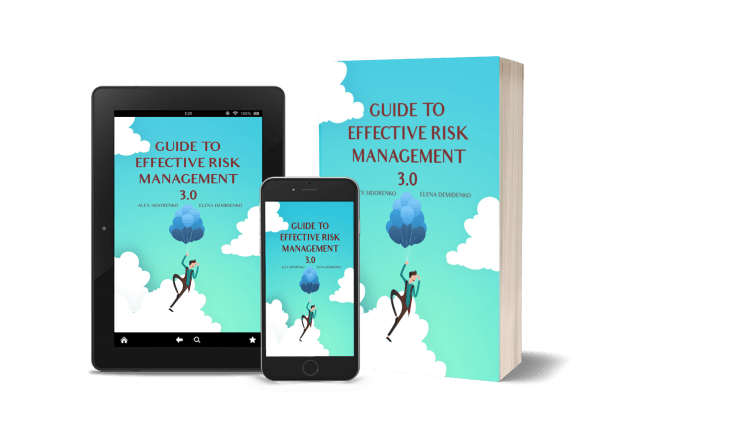Наши популярные онлайн курсы
Best risk management books grouped by theme:
- foundation in risk management and decision making
- advanced risk analysis
- other important books every risk manager must read
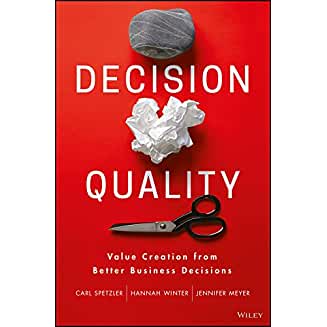
Add value with every decision using a simple yet powerful framework
Few things are as valuable in business, and in life, as the ability to make good decisions. Can you imagine how much more rewarding your life and your business would be if every decision you made were the best it could be? Decision Quality empowers you to make the best possible choice and get more of what you truly want from every decision.
Dr. Carl Spetzler is a leader in the field of decision science and has worked with organizations across industries to improve their decision-making capabilities. He and his co-authors, all experienced consultants and educators in this field, show you how to frame a problem or opportunity, create a set of attractive alternatives, identify relevant uncertain information, clarify the values that are important in the decision, apply tools of analysis, and develop buy-in among stakeholders. Their straightforward approach is elegantly simple, yet practical and powerful. It can be applied to all types of decisions.
Our business and our personal lives are marked by a stream of decisions. Some are small. Some are large. Some are life-altering or strategic. How well we make those decisions truly matters. This book gives you a framework and thinking tools that will help you to improve the odds of getting more of what you value from every choice. You will learn:
- The six requirements for decision quality, and how to apply them
- The difference between a good decision and a good outcome
- Why a decision can only be as good as the best of the available alternatives
- Methods for making both “significant” and strategic decisions
- The mental traps that undermine decision quality and how to avoid them
- How to deal with uncertainty—a factor in every important choice
- How to judge the quality of a decision at the time you’re making it
- How organizations have benefited from building quality into their decisions.
Many people are satisfied with ‘good enough’ when making important decisions. This book provides a method that will take you and your co-workers beyond ‘good enough’ to true Decision Quality.
Buy on Amazon or find this as an audiobook or read free on Kindle Unlimited
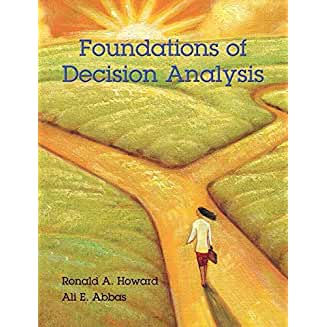
Foundations of Decision Analysis is a groundbreaking text that explores the art of decision making, both in life and in professional settings. By exploring themes such as dealing with uncertainty and understanding the distinction between a decision and its outcome.
The book treats decision making as an evolutionary process from a scientific standpoint. Strategic decision-making analysis is presented as a tool to help students understand, discuss, and settle on important life choices. Through this text, readers will understand the specific thought process that occurs behind approaching any decision to make easier and better life choices for themselves.
Buy on Amazon or find this as an audiobook or read free on Kindle Unlimited
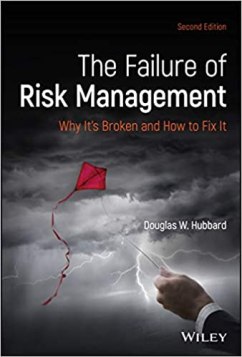
Decision-makers at organizations in any field rely on risk management and analysis methods presumably to improve critical decisions. However, commonly used methods show little evidence of improving decisions. Instead, they could actually make decisions worse.
This is because many of the most popular risk management tactics aren’t rooted in sound quantitative analysis. In the Second Edition of The Failure of Risk Management, Douglas W. Hubbard, inventor of Applied Information Economics (AIE), addresses how organizations and governments can perform risk analysis properly. He also explains how many basic methods are misapplied, helping readers better understand what steps they must take to improve their risk management techniques.
This latest edition of The Failure of Risk Management is particularly useful to decision-makers adapting to a fast-changing world. It includes updated examples citing such recent events as natural disasters and data breaches, describes additional statistical methods, and incorporates updated research. The reader learns about effective methods which can start simple and evolve as needed.
Douglas Hubbard is the ideal author to share this knowledge. His AIE methodology has been used by organizations in numerous fields, including cybersecurity, aerospace, biotech, commercial real estate, entertainment, and military logistics, among many others. Leveraging decades of experience in risk management, as well as real-world case studies, he identifies key weaknesses preventing organizations of all kinds from improving their risk management techniques. Additionally, he identifies which methods have been shown to work.
Effective risk management plays an essential role in effective decision- making. By applying the insights provided in this book, you’ll find yourself (and your organization as a whole) making smarter decisions based on techniques that have shown a measurable benefit.
Buy 2020 version on Amazon or find 2009 version as an audiobook or read 2009 version free on Kindle Unlimited
A must-read for anyone who makes business decisions that have a major financial impact.
As the recent collapse on Wall Street shows, we are often ill-equipped to deal with uncertainty and risk. Yet every day we base our personal and business plans on uncertainties, whether they be next month’s sales, next year’s costs, or tomorrow’s stock price. In The Flaw of Averages, SamSavageknown for his creative exposition of difficultsubjects describes common avoidable mistakes in assessing risk in the face of uncertainty. Along the way, he shows why plans based on average assumptions are wrong, on average, in areas as diverse as healthcare, accounting, the War on Terror, and climate change. In his chapter on Sex and the Central Limit Theorem, he bravely grasps the literary third rail of gender differences.
Instead of statistical jargon, Savage presents complex concepts in plain English. In addition, a tightly integrated website contains numerous animations and simulations to further connect the seat of the reader’s intellect to the seat of their pants.
The Flaw of Averages typically results when someone plugs a single number into a spreadsheet to represent an uncertain future quantity. Savage finishes the book with a discussion of the emerging field of Probability Management, which cures this problem through a new technology that can pack thousands of numbers into a single spreadsheet cell.
Buy on Amazon or find this as an audiobook or read free on Kindle Unlimited
Buy new Sam’s book on Amazon
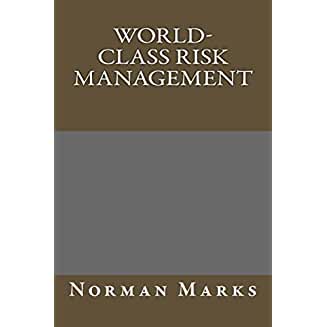
What is world-class risk management? Why do so many top executives and board members have difficulty seeing how enterprise risk management makes a positive contribution to the success of the organization?
Norman Marks is recognized as a global thought leader in risk management. He is an Honorary Fellow of the Institute of Risk Management and a Fellow of the Open Compliance and Ethics Group. A prolific blogger, author of three previous books and multiple award-winning articles, and a speaker at conferences and seminars around the world, Norman Marks is an original thinker with a business rather than a technical risk management perspective.
Norman considers these key questions and provides his insights, focusing on the need to make the management of risk a key ingredient in decision-making and the running of the business. He considers not only how risk relates to objective and strategy-setting, but discusses each risk management activity from identifying to treating risk – as an integral part of day-to-day management rather than a separate, periodic exercise.
The book includes a challenging and thoughtful foreword by Grant Purdy, one of the pioneers and highly-respected risk management leaders.
Buy on Amazon or find this as an audiobook or read free on Kindle Unlimited
Risk management is ultimately about creating a culture that would facilitate risk discussion when performing business activities or making any strategic, investment or project decision.
In this free book, Alex Sidorenko and Elena Demidenko talk about practical steps risk managers can take to integrate risk management into decision making and core business processes. Based on our research and the interviews, we have summarised fifteen practical ideas on how to improve the integration of risk management into the daily life of the organisation. These were grouped into three high level objectives: drive risk culture, help integrate risk management into business and become a trusted advisor.
The three key takeaways from the book include:
- Risk management is not just about tools and techniques; it is about changing the corporate culture and the mindset of management and employees. This change cannot happen overnight, risk managers need to start small by embedding elements of risk analysis into various decision making processes, expanding the scope of risk management over time.
- It is vital to break the status quo where risk management is seen as a separate and independent activity. Instead, risk managers should integrate risk management into core business activities. This can be achieved by integrating risk analysis into decision making processes, assisting management in evaluating projects and strategic initiatives with the use of risk analysis tools, integrating risk management into strategic planning, budgeting and performance management, incorporating responsibilities in job descriptions, providing management training and etc.
- Risk managers should strive to become advisors to senior management and the Board. Advisers that are trusted and whose recommendations are listened to. To achieve this, risk managers may need to break away from traditional models like “3 lines of defense” and instead choose to actively participate in the decision making, take ownership of some risks and provide an independent assessment of risks associated with important business decisions, maybe even veto some high-risk activities.
This document is designed to be a practical implementation guide. Each section is accompanied by checklists, video references, useful links and templates.
This guide isn’t about “classical” risk management with its useless risk maps, risk registers, risk owners or risk mitigation plans. This guide is about implementing the most current risk analysis research into the business processes, decision making and the overall culture of the organization.
READ ONLINE FREE OR DOWNLOAD: https://www.researchgate.net/publication/323254437_GUIDE_TO_EFFECTIVE_RISK_MANAGEMENT_30
Buy audiobook: https://riskacademy.blog/product/audio-risk-management-book/
Buy the book in a course with additional commentary and masterclasses: https://www.udemy.com/course/1687492/
Judea Pearl, Dana Mackenzie
“Correlation does not imply causation”. This mantra has been invoked by scientists for decades and has led to a virtual prohibition on causal talk. But today, that taboo is dead. The causal revolution, sparked by Judea Pearl and his colleagues, has cut through a century of confusion and placed causality – the study of cause and effect – on a firm scientific basis. His work explains how we can know easy things, like whether it was rain or a sprinkler that made a sidewalk wet, and how to answer hard questions, like whether a drug cured an illness. Pearl’s work enables us to know not just whether one thing causes another: It lets us explore the world that is and the worlds that could have been. It shows us the essence of human thought and key to artificial intelligence. Anyone who wants to understand either needs The Book of Why.

Buy on Amazon or find this as an audiobook or read free on Kindle Unlimited
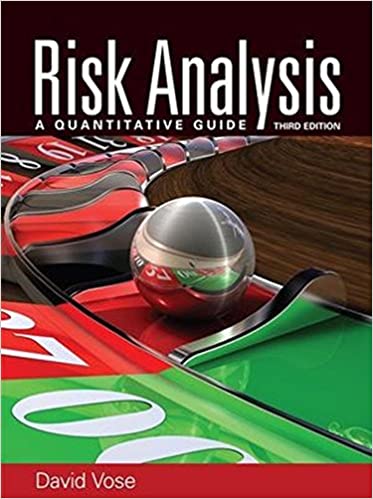
Risk Analysis A Quantitative Guide Risk and uncertainty are key features of most business and government problems and need to be understood for rational decisions to be made. This book concerns itself with the quantification of risk, the modelling of identified risks and how to make decisions from those models. Following on from the success of the previous edition of this clearly written and highly regarded book, this edition is extensively revised and updated and will provide an invaluable practical guide for beginners and experienced practitioners alike.
Quantitative risk analysis (QRA) using Monte Carlo simulation offers a powerful and precise method for dealing with the uncertainty and variability of a problem. By providing the building blocks the author guides the reader through the necessary steps to produce an accurate risk analysis model and offers general and specific techniques to cope with most modelling problems. A wide range of solved problems is used to illustrate these techniques and how they can be used together to solve otherwise complex problems.
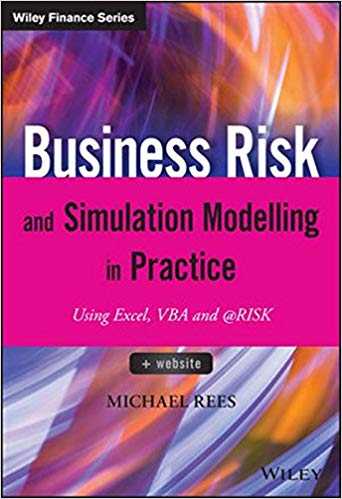
The complete guide to the principles and practice of risk quantification for business applications.
The assessment and quantification of risk provide an indispensable part of robust decision-making; to be effective, many professionals need a firm grasp of both the fundamental concepts and of the tools of the trade. Business Risk and Simulation Modelling in Practice is a comprehensive, in–depth, and practical guide that aims to help business risk managers, modelling analysts and general management to understand, conduct and use quantitative risk assessment and uncertainty modelling in their own situations. Key content areas include:
- Detailed descriptions of risk assessment processes, their objectives and uses, possible approaches to risk quantification, and their associated decision-benefits and organisational challenges.
- Principles and techniques in the design of risk models, including the similarities and differences with traditional financial models, and the enhancements that risk modelling can provide.
- In depth coverage of the principles and concepts in simulation methods, the statistical measurement of risk, the use and selection of probability distributions, the creation of dependency relationships, the alignment of risk modelling activities with general risk assessment processes, and a range of Excel modelling techniques.
- The implementation of simulation techniques using both Excel/VBA macros and the @RISK Excel add-in. Each platform may be appropriate depending on the context, whereas the core modelling concepts and risk assessment contexts are largely the same in each case. Some additional features and key benefits of using @RISK are also covered.
Business Risk and Simulation Modelling in Practice reflects the author′s many years in training and consultancy in these areas. It provides clear and complete guidance, enhanced with an expert perspective. It uses approximately one hundred practical and real-life models to demonstrate all key concepts and techniques; these are accessible on the companion website.
Buy on Amazon or find this as an audiobook or read free on Kindle Unlimited
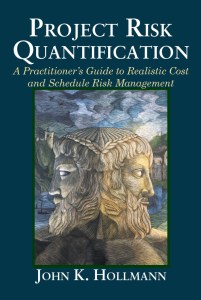
Project Risk Quantification
Project Risk Quantification presents the most practical, realistic, and integrated approach to project cost and schedule Risk Quantification that is available today! It offers proven, empirically-valid methods and tools applicable to projects of all types and at all decision gates. The text is written for both the manager and the risk analysis practitioner. It will bring reliable accuracy and contingency determination to your capital project organization.
Buy on the publisher’s website
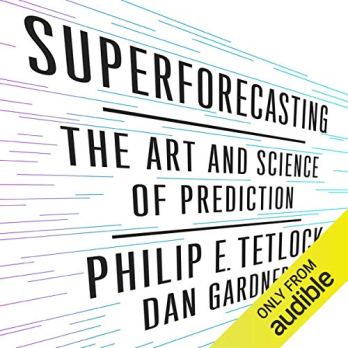
From one of the world’s most highly regarded social scientists, a transformative book on the habits of mind that lead to the best predictions.
Everyone would benefit from seeing further into the future, whether buying stocks, crafting policy, launching a new product, or simply planning the week’s meals. Unfortunately people tend to be terrible forecasters. As Wharton professor Philip Tetlock showed in a landmark 2005 study, even experts’ predictions are only slightly better than chance. However, an important and underreported conclusion of that study was that some experts do have real foresight, and Tetlock has spent the past decade trying to figure out why. What makes some people so good? And can this talent be taught?
In Superforecasting, Tetlock and coauthor Dan Gardner offer a masterwork on prediction, drawing on decades of research and the results of a massive, government-funded forecasting tournament. The Good Judgment Project involves tens of thousands of ordinary people – including a Brooklyn filmmaker, a retired pipe installer, and a former ballroom dancer – who set out to forecast global events. Some of the volunteers have turned out to be astonishingly good. They’ve beaten other benchmarks, competitors, and prediction markets. They’ve even beaten the collective judgment of intelligence analysts with access to classified information. They are “superforecasters”.
In this groundbreaking and accessible book, Tetlock and Gardner show us how we can learn from this elite group. Superforecasting offers the first demonstrably effective way to improve our ability to predict the future – whether in business, finance, politics, international affairs, or daily life – and is destined to become a modern classic.
Buy on Amazon or find this as an audiobook or read free on Kindle Unlimited
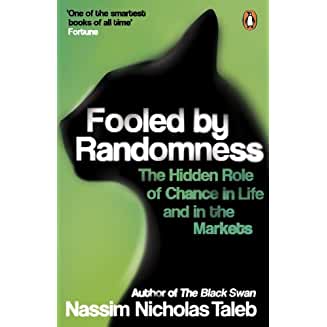
Everyone wants to succeed in life. But what causes some of us to be more successful than others? Is it really down to skill and strategy; or something altogether more unpredictable? This book is the word-of-mouth sensation that will change the way you think about business and the world. It is all about luck: more precisely, how we perceive luck in our personal and professional experiences. Nowhere is this more obvious than in the markets we hear an entrepreneur has vision or a trader is talented, but all too often their performance is down to chance rather than skill. It is only because we fail to understand probability that we continue to believe events are non-random, finding reasons where none exist. This irreverent bestseller has shattered the illusions of people around the world by teaching them how to recognize randomness. Now it can do the same for you.
Buy on Amazon or find this as an audiobook or read free on Kindle Unlimited
While Fooled by randomness is still my personal favourite, you cal also buy Taleb’s latest book called Skin in the game.
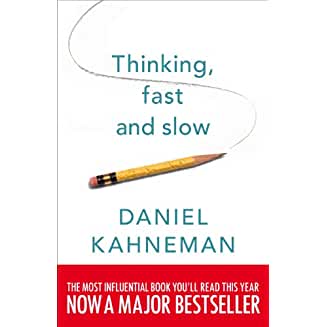
Daniel Kahneman, recipient of the Nobel Prize in Economic Sciences for his seminal work in psychology challenging the rational model of judgment and decision making, is one of the world’s most important thinkers. His ideas have had a profound impact on many fields-including business, medicine, and politics-but until now, he has never brought together his many years of research in one book.
In Thinking, Fast and Slow, Kahneman takes us on a groundbreaking tour of the mind and explains the two systems that drive the way we think and make choices. One system is fast, intuitive, and emotional; the other is slower, more deliberative, and more logical. Kahneman exposes the extraordinary capabilities-and also the faults and biases-of fast thinking, and reveals the pervasive influence of intuitive impressions on our thoughts and behaviour. The importance of properly framing risks, the effects of cognitive biases on how we view others, the dangers of prediction, the right ways to develop skills, the pros and cons of fear and optimism, the difference between our experience and memory of events, the real components of happiness-each of these can be understood only by knowing how the two systems work together to shape our judgments and decisions.
Drawing on a lifetime’s experimental experience, Kahneman reveals where we can and cannot trust our intuitions and how we can tap into the benefits of slow thinking. He offers practical and enlightening insights into how choices are made in both our professional and our personal lives-and how we can use different techniques to guard against the mental glitches that often get us into trouble. Thinking, Fast and Slow will transform the way you take decisions and experience the world.
Buy on Amazon or find this as an audiobook or read free on Kindle Unlimited
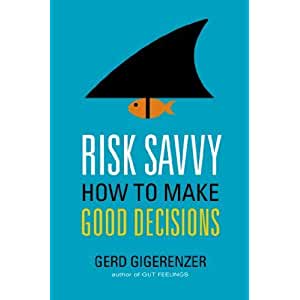
A fascinating, practical guide to making better decisions with our money, health and personal lives from Gerd Gigerenzer, the author of Reckoning with Risk.
Risk-taking is essential for innovation, fun, and the courage to face the uncertainties in life. Yet for many important decisions, we’re often presented with statistics and probabilities that we don’t really understand and we inevitably rely on experts in the relevant fields – policy makers, financial advisors, doctors – to analyse and choose for us. But what if they don’t quite understand the way the information is presented either?
How do we make sure we’re asking doctors the right questions about proposed treatment? Is there a rule of thumb that could help choose the right partner?
This entertaining book shows us how to recognize when we don’t have all the information and know what to do about it. Gerd Gigerenzer looks at examples from every aspect of life to identify the reasons for our collective misunderstanding of the risks we face. He shows how we can all use simple rules to avoid being manipulated into unrealistic fears or hopes, to make better-informed decisions, and to learn to understand risk and uncertainty in our own lives.
Gerd Gigerenzer is Director of the Center for Adaptive Behavior and Cognition at the Max Planck Institute for Human Development in Berlin and former Professor of Psychology at the University of Chicago. He is the author of several books on heuristics and decision making
Buy on Amazon or find this as an audiobook or read free on Kindle Unlimited
Get these books cheaper and delivered for free with Amazon Prime or claim books as business expenses using Amazon Business





























